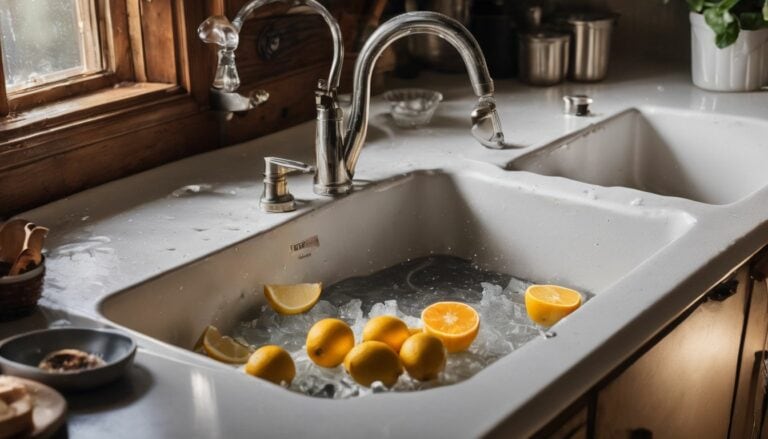The Ultimate Guide to Finding the Best Degreaser for Kitchen Cabinets
Does the sight of stubborn, sticky grease on your kitchen cabinets make you cringe? Trust me, I know how it feels – those pesky stains can totally spoil the charm of our lovely kitchens.
After encountering this issue in my own home and spending countless hours researching solutions, I’ve gathered a goldmine of information on top-of-the-line degreasers that are excellent at battling grime build-up.
In this all-encompassing guide, we’ll explore every nook and cranny to help bring back the spotless shine to your kitchen cabinets (and ensure it stays!). Ready for a fresh start? Let’s get cleaning!
Key Takeaways
- Degreasing kitchen cabinets before painting is important to ensure that the paint adheres well and doesn’t flake off.
- Choosing the right cleaning method for your specific cabinet type is crucial for effective degreasing.
- Recommended kitchen cabinet degreasers include ammonia-based options, citrus oil degreasers, dish soap, and other specialized products like Green Gobbler All-Natural Cold Pressed Concentrated Orange Oil or Rejuvenate Cabinet and Furniture Restorer.
The Importance of Degreasing Kitchen Cabinets Before Painting
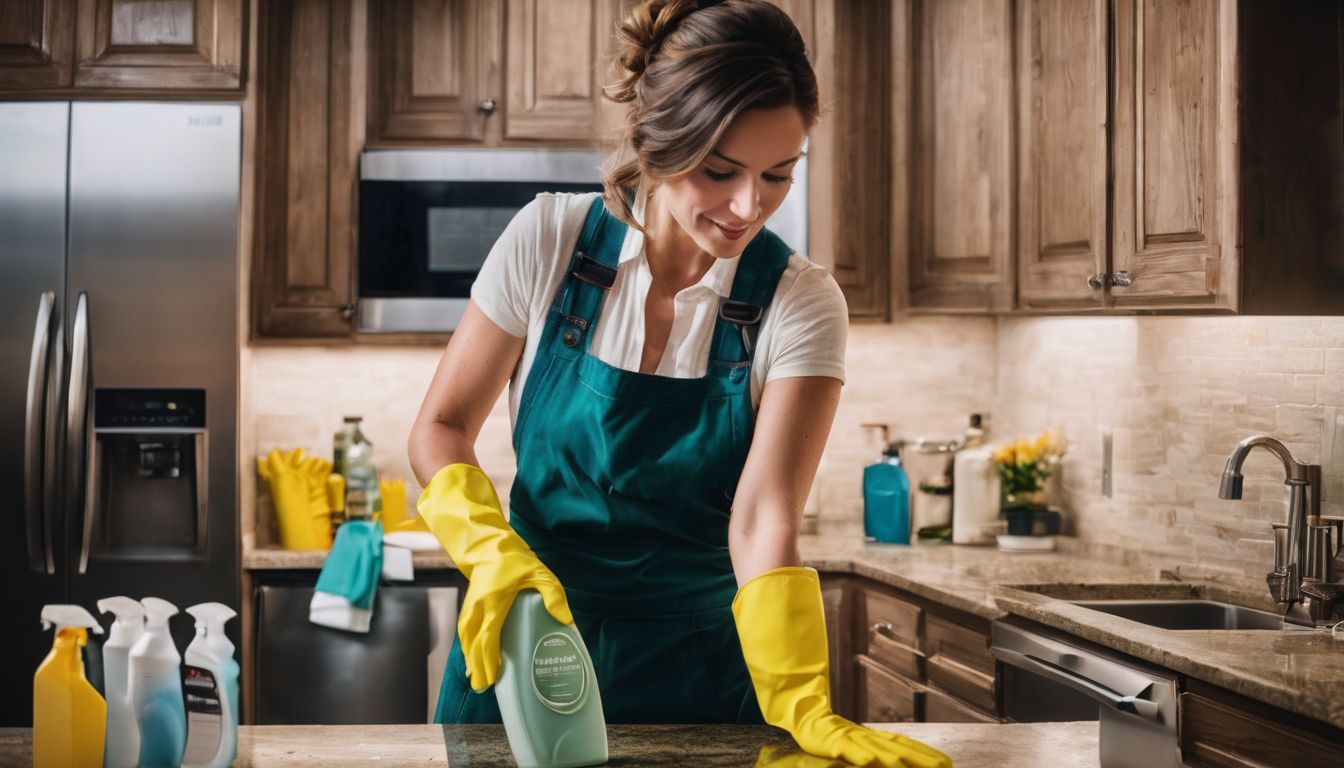
Degreasing kitchen cabinets is a must before painting. It’s not good to paint over grease. If you do, the paint won’t stick well. The new color may flake off or look bad because of this.
You need a heavy-duty degreaser for top-notch cleaning. This tool can take off all the muck and grime from your cabinets. Baking soda is also great for this job if you want something natural.
Another way to tackle grease is with water and dishwasher mix. Spray it on the cabinet, starting from the top and going down to the bottom parts. A clean canvas makes for an excellent painting job!
How to Properly Degrease Kitchen Cabinets
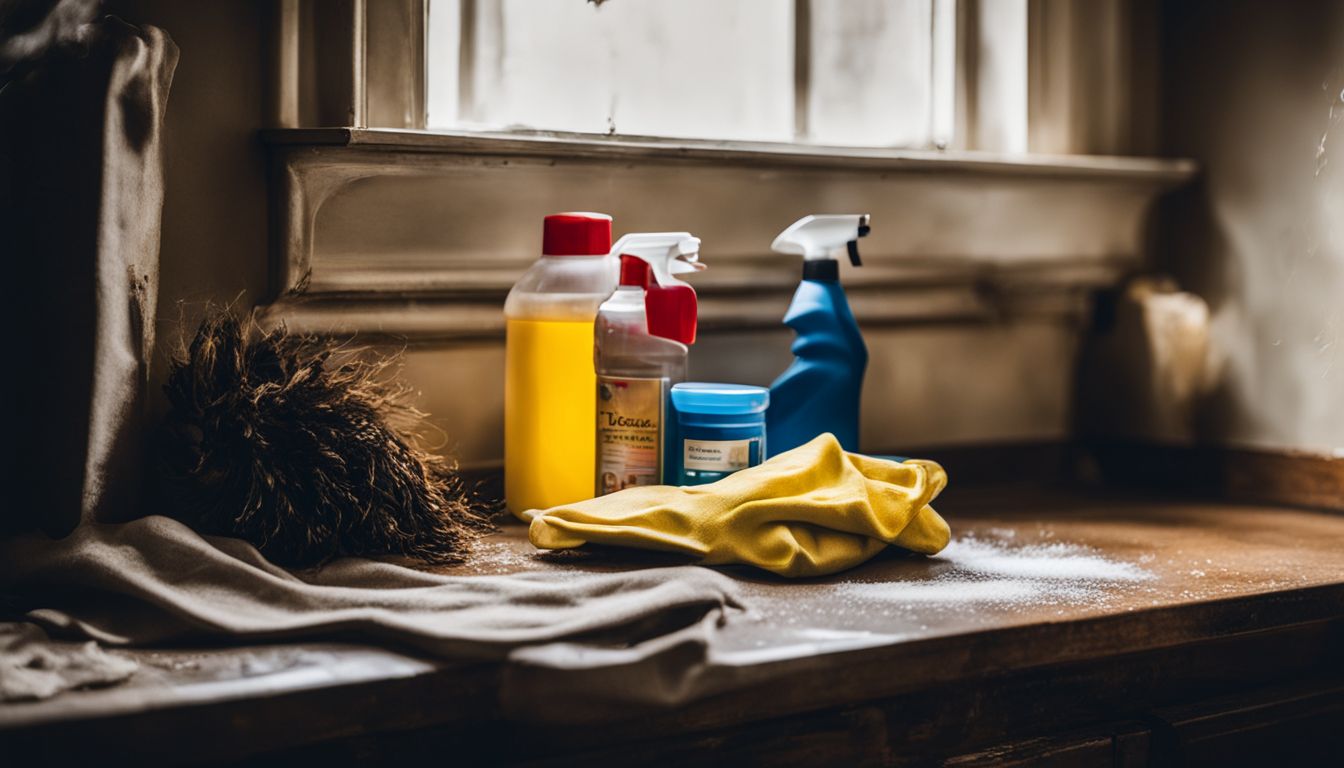
To properly degrease your kitchen cabinets, start by choosing the right cleaning method for your specific cabinet type.
Choose the Right Cleaning Method for Your Cabinet Type

Cleaning cabinets can be easy. You need to know the type of cabinet first. Then, pick the right cleaning method for it. For sticky doors, I use a microfiber cloth and my favorite degreaser.
I start at the top and wipe down to the bottom.
The inside of your cabinets needs care too. A mild cleaner works best here. Use a clean sponge or cloth with no lint on it for this job. Mix water with your light cleaner and then start wiping them down.
Remember not to use hard scrubbing or harsh cleaners! This could harm your lovely cabinets.
Gather the Necessary Tools and Materials

Let’s talk about tools and materials. You need the right ones to do a good job cleaning your kitchen cabinets. Here they are:
- Cleaning agents: Choose the one that suits you best. It can be dish soap or orange oil cleaner.
- Degreasing solution: This helps to cut through all the grease on your cabinets.
- Scrubbing brush: A stiff brush gets into all the little spots where grime hides.
- Absorbent cloths and paper towels: Use these to take off the dirty cleaner.
- Dishwashing detergent: This is great for light cleaning days.
- Vinegar solution: Warm vinegar water can clean without harsh chemicals.
- Universal cleaner: This cleaner works all around your home, including in your kitchen!
- Homemade cleaner: Make your own with vinegar, liquid soap, baking soda, and nice-smelling oils.
Step-by-Step Guide on How to Degrease Kitchen Cabinets
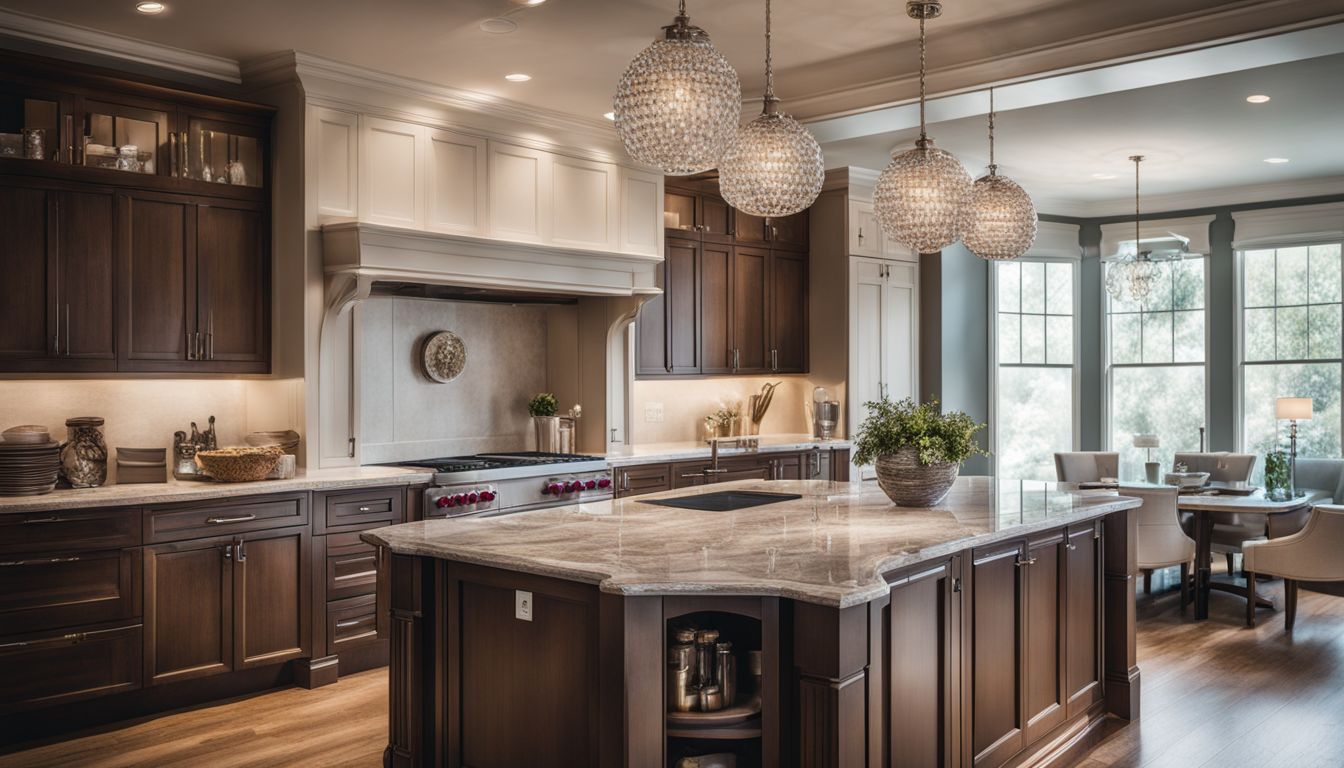
I’ve got some helpful steps for you on how to degrease your kitchen cabinets. Here’s what you need to do:
- Prepare the cleaning solution: Mix 1 cup of ammonia and 1 cup of water in a spray bottle. This will be your powerful degreasing solution.
- Remove all items from the cabinets: Take out everything from your cabinets, including dishes, utensils, and food containers. Clearing them out will make it easier to clean the surfaces.
- Wipe down the cabinet exteriors: Spray the cleaning solution onto a soft cloth or sponge, and gently wipe down the outside of each cabinet door and drawer front. Make sure to pay extra attention to areas with visible grease buildup.
- Clean the interior shelves and drawers: Use the same cleaning solution to wipe down the inside of your cabinets. Remove any crumbs or debris that may have accumulated over time.
- Scrub away stubborn grease stains: For tough grease stains, use a scrub brush or an old toothbrush dipped in the cleaning solution to scrub away the grime. Be gentle to avoid damaging the surface.
- Rinse and dry: Once you’ve finished scrubbing, rinse off any remaining cleaning solution with warm water. Then, dry all surfaces thoroughly with a clean towel.
Recommended Kitchen Cabinet Degreasers
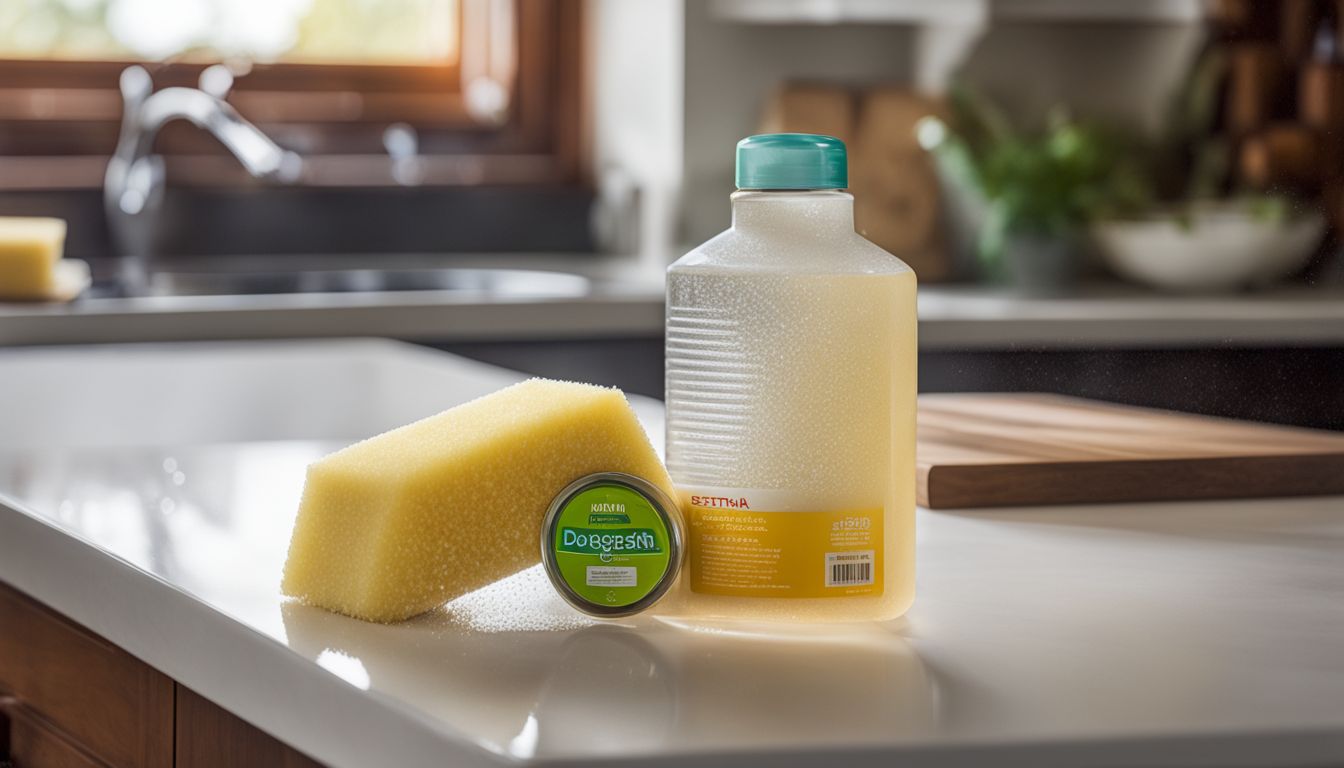
In this section, I will recommend some of the best kitchen cabinet degreasers that you can try. From ammonia-based to citrus oil degreasers, there are various options to choose from.
Read on to find out which ones made it onto our top picks list!
Ammonia-Based Degreasers
Ammonia-based degreasers are strong cleaning agents commonly used to remove grease and grime from kitchen cabinets. They are a recommended option for effectively tackling tough, built-up grease on cabinet surfaces.
One recipe for an ammonia-based degreaser is mixing 1 cup of ammonia with 1 cup of water in a spray bottle. This solution can be sprayed onto the cabinet surfaces and then wiped clean with a soft cloth or sponge.
Ammonia-based degreasers are known for their powerful cleaning abilities and can help restore the shine to your kitchen cabinets.
Citrus Oil Degreasers

Citrus oil degreasers are a top choice for kitchen cabinet cleaning. They are effective in removing stubborn grease and grime from cabinets, leaving them looking clean and refreshed.
One of the great benefits of citrus oil degreasers is that they are made from natural ingredients, making them a safe and eco-friendly option. Whether your cabinets are made of wood or laminate, citrus oil degreasers can be used without damaging the surface.
Plus, they leave behind a pleasant scent, making your kitchen smell fresh and inviting. When it comes to finding the best degreaser for your kitchen cabinets, citrus oil-based options should definitely be on your list to consider.
Dish Soap
Dish soap, like Dawn, is a great choice for degreasing kitchen cabinets. It’s gentle yet effective at cutting through grease and grime. Plus, dish soap is pH neutral, so it won’t harm any surface types on your cabinets.
You can even make your own homemade wood cabinet cleaner by mixing a small amount of dish soap with warm water. Many people swear by using dish soap as a key ingredient in their kitchen cabinet cleaning hacks.
So next time you need to degrease your cabinets, reach for some trusty dish soap!
Top Picks for Kitchen Cabinet Degreasers
Here are some top picks for effective kitchen cabinet degreasers that will help you tackle even the toughest grease buildup:
Green Gobbler All-Natural Cold Pressed Concentrated Orange Oil
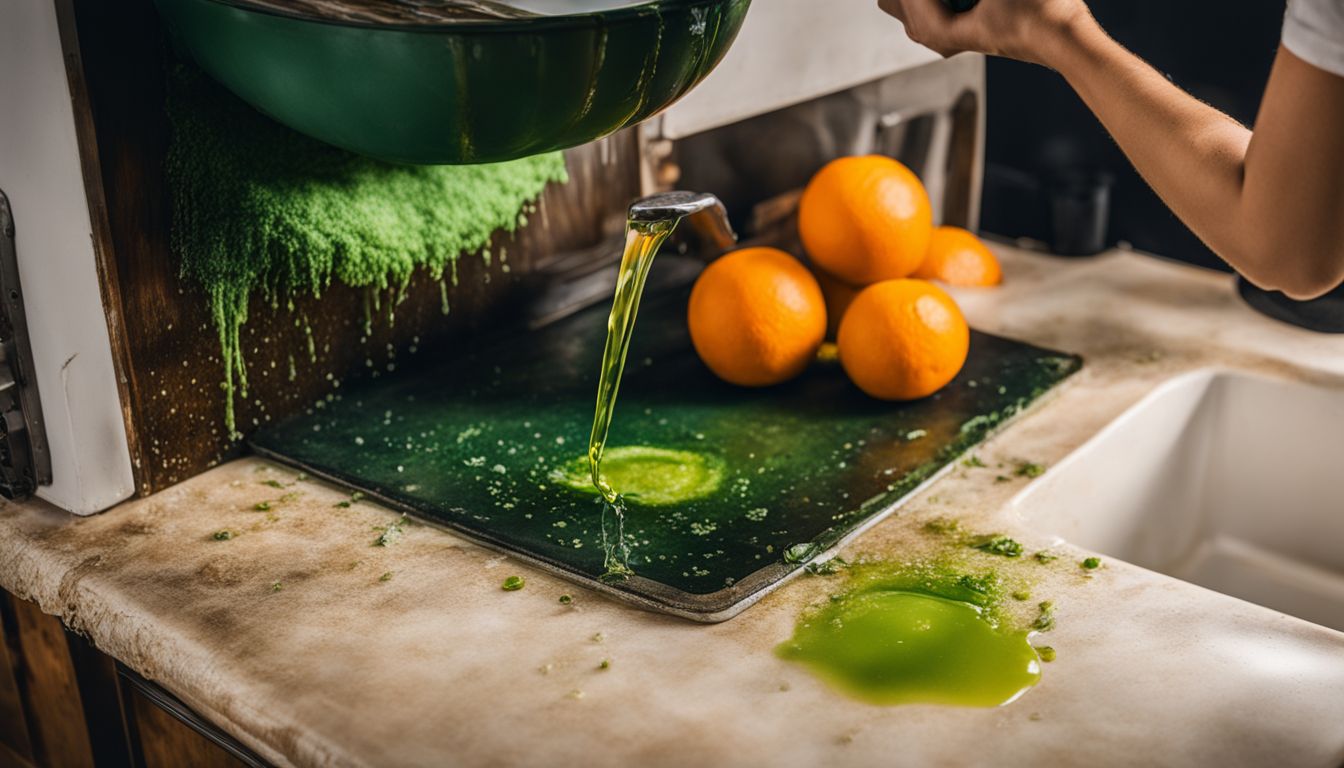
Green Gobbler All-Natural Cold Pressed Concentrated Orange Oil is a fantastic option for degreasing kitchen cabinets. It’s an all-purpose cleaner that contains 80-95% D-Limonene, which is a natural solvent found in oranges.
This powerful orange oil can tackle tough grease, grime, dirt, oil, and sticky residue on your cabinets. With its concentrated formula and 32oz size, you’ll have plenty of product to get the job done.
Not only is it effective for indoor cleaning, but it can also be used outdoors for various purposes. So if you’re looking for a reliable and eco-friendly degreaser for your kitchen cabinets, give Green Gobbler All-Natural Cold Pressed Concentrated Orange Oil a try!
TriNova Multi-Surface Cleaner
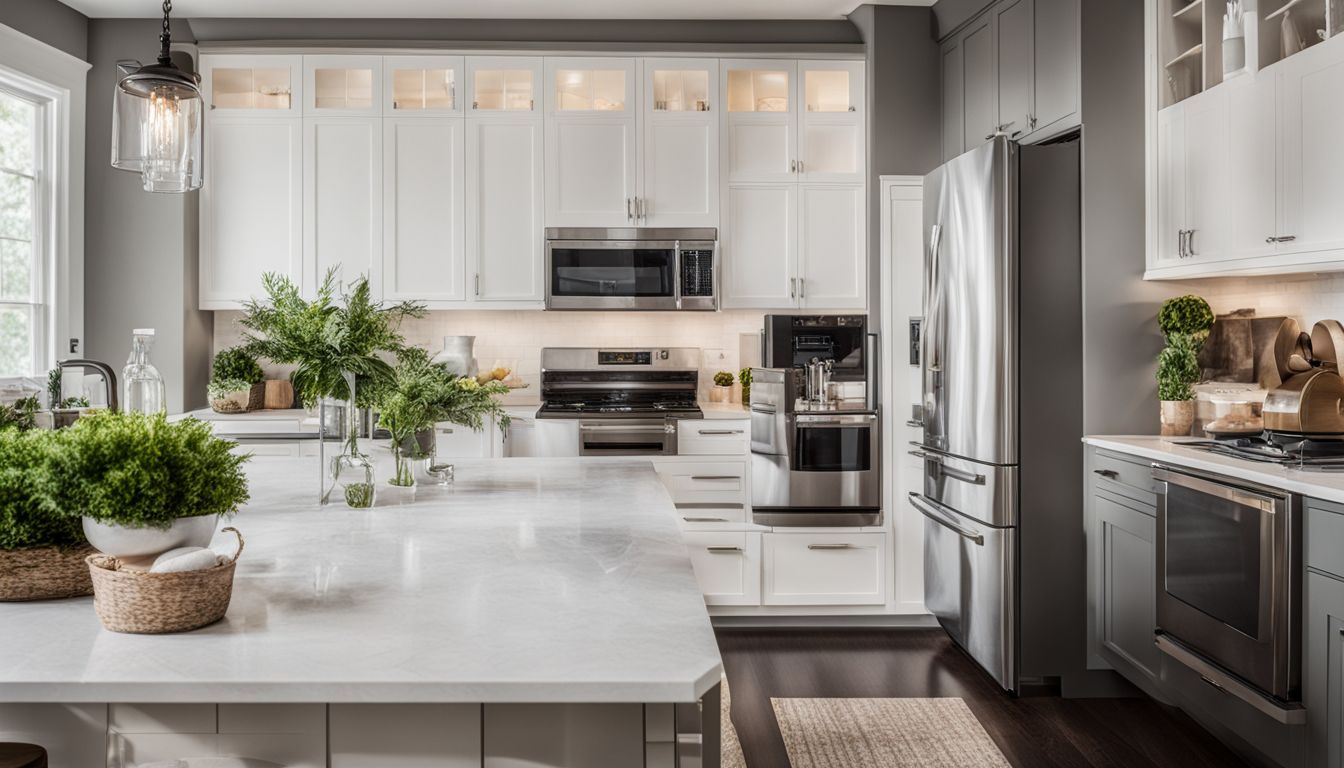
TriNova Multi-Surface Cleaner is one of the top picks for kitchen cabinet degreasers. It’s effective in removing grease from cabinets and other surfaces. It’s recommended as a powerful cleaner that can tackle tough grime without damaging your cabinets.
With TriNova Multi-Surface Cleaner, you can ensure that your kitchen cabinets are thoroughly degreased and ready for painting or any other maintenance you have planned.
Krud Kutter

Krud Kutter is the top pick for degreasing kitchen cabinets. It’s easy to use with a simple spray and wipe off method. What makes Krud Kutter great is that it’s non-toxic and environmentally friendly.
In fact, it’s so popular that it’s the bestselling degreaser on Amazon. If you’re looking to remove oil stains, grime, and dirt from your kitchen surfaces, Krud Kutter is definitely worth considering.
Goo Gone Kitchen Degreaser
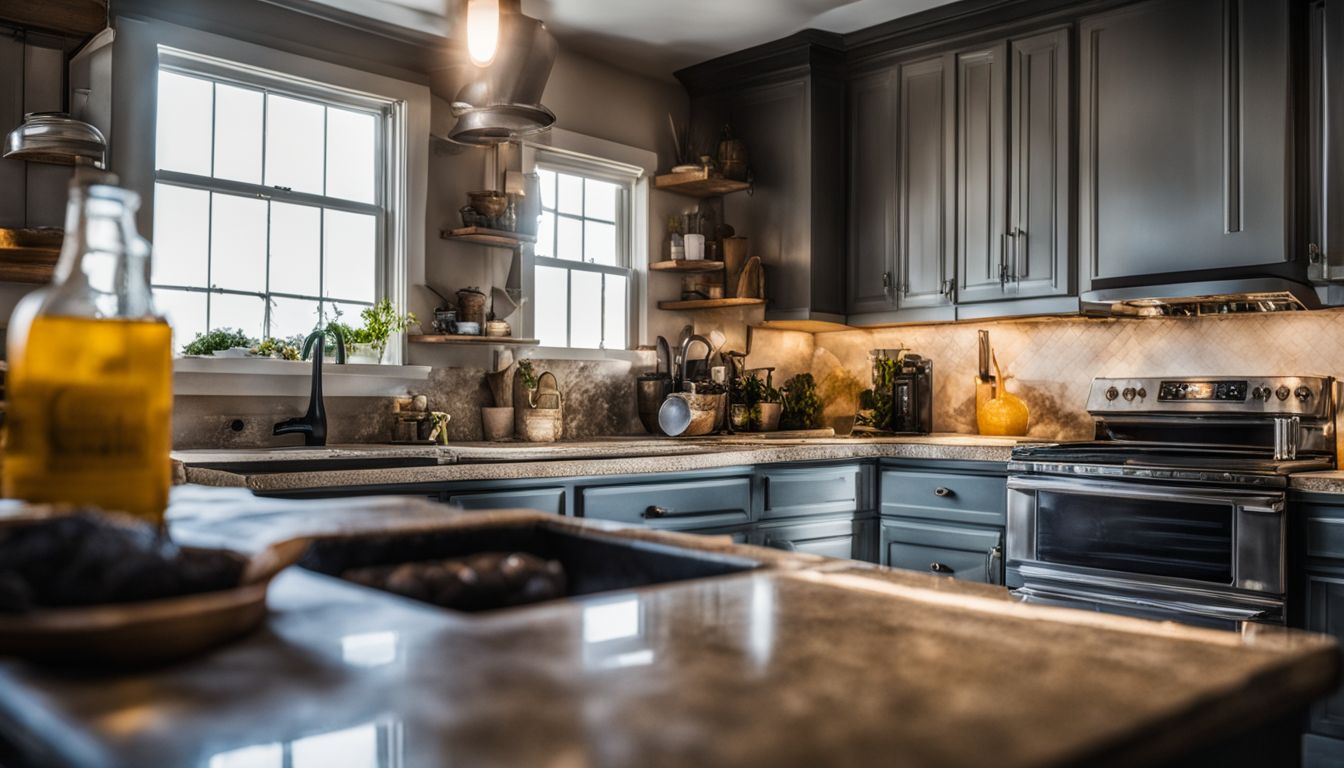
Goo Gone Kitchen Degreaser is a highly effective cleaner that can tackle even the toughest grease on your kitchen cabinets. Its powerful foaming action makes it easy to apply and removes grease with ease.
The best part is that it’s non-toxic and environmentally friendly, so you can use it in your kitchen without worrying about harmful chemicals. Goo Gone Kitchen Degreaser is widely available for purchase online and at popular retailers like Target and Home Depot.
Miracle Wipes for Wood Surfaces
Miracle Wipes for Wood Surfaces are a great choice for cleaning your kitchen cabinets. These wipes are specifically designed to remove oils and grease from wood surfaces, making them perfect for degreasing your cabinets.
I really like how easy they are to use – simply grab a wipe and start wiping down the surface. They’re quick and efficient, providing you with a convenient solution for keeping your wood surfaces clean and looking their best.
In fact, Miracle Wipes for Wood Surfaces have been mentioned as one of the top degreasers for kitchen cabinets in our article. Give these wipes a try if you’re looking for an effective option to keep your cabinets clean!
Dawn Dish Soap
Dawn dish soap is one of the best degreasers for kitchen cabinets. It is gentle yet powerful in removing grease and grime from your cabinets. With its grease-cutting abilities, Dawn dish soap can easily tackle even the toughest stains on your kitchen cabinets.
Not only that, but it is also a versatile cleaner that you can use for various cleaning tasks around the house. Whether it’s removing tough food stains or cleaning hard-to-reach spots on your cabinets, Dawn dish soap has got you covered.
So if you’re looking for an effective and reliable degreaser for your kitchen cabinets, Dawn dish soap is definitely worth considering.
Rejuvenate Cabinet and Furniture Restorer
The Rejuvenate Cabinet and Furniture Restorer is a great choice for cleaning and restoring your wood cabinets. It’s a water and polymer-based formula that can cut through grease and make your cabinets shine again.
Not only does it clean, but it also fills in scratches, seals grout, and protects against water damage. This easy-to-use cleaner is highly rated by customers who appreciate its effectiveness and ability to restore the beauty of their cabinets.
If you’re looking for a reliable cabinet degreaser with added benefits like scratch removal and water protection, the Rejuvenate Cabinet and Furniture Restorer is definitely worth considering.
Choosing the Best Degreaser for Your Kitchen Cabinets
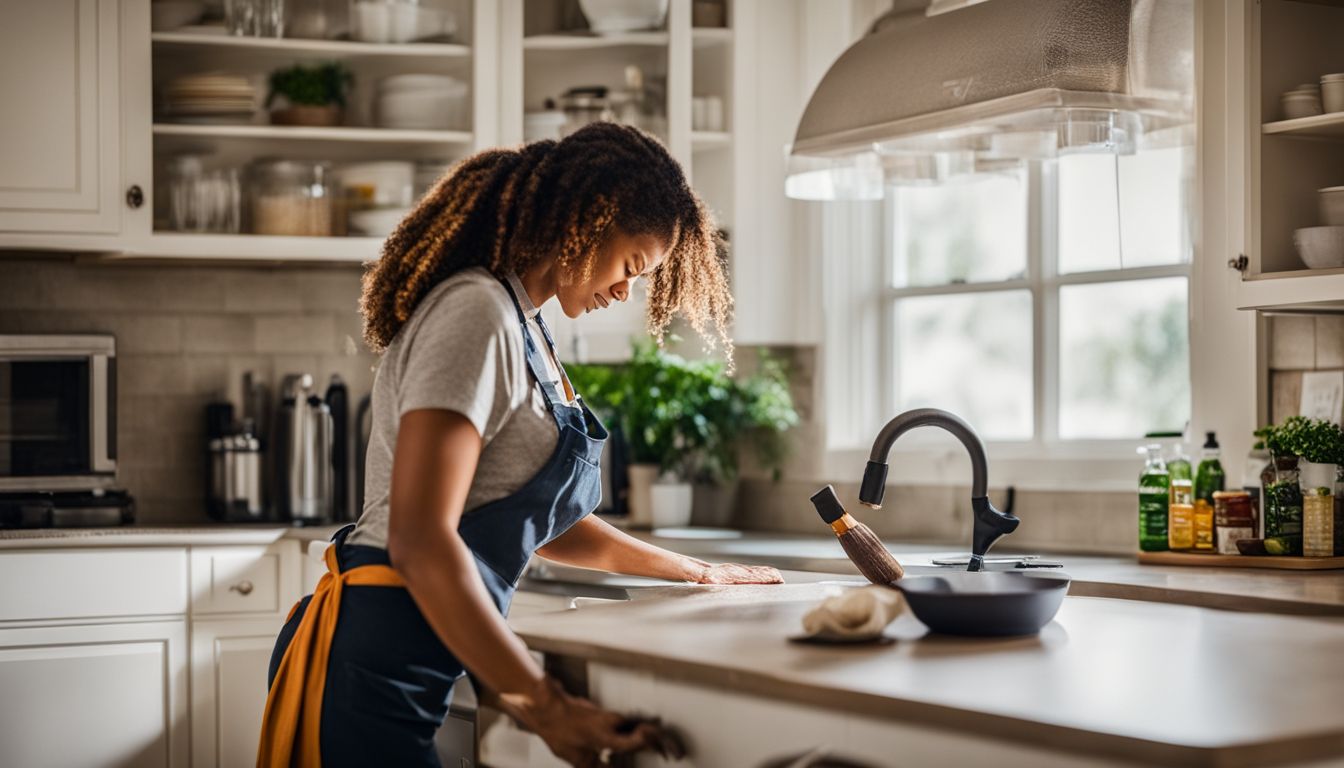
In this section, we’ll discuss factors to consider when choosing the best degreaser for your kitchen cabinets, as well as natural alternatives to processed or commercially produced degreasers.
Ready to find the perfect solution? Keep reading!
Factors to Consider
When choosing the best degreaser for your kitchen cabinets, there are a few factors to consider. Here’s what you need to keep in mind:
- Surface materials: Different cabinet materials may require specific degreasers. Check the manufacturer’s recommendations or do some research to find a degreaser that is safe for your cabinet surfaces.
- Cleaning agents: Look for degreasers that contain effective cleaning agents such as ammonia or citrus oil. These can help break down grease and grime better.
- Grease removal: Make sure the degreaser you choose is specifically formulated to tackle grease build-up. It should be able to penetrate and dissolve tough grease stains.
- Effective cleaning: Opt for a degreaser that not only removes grease but also cleans and shines your cabinets. This will ensure that your cabinets look clean and new after degreasing.
- Kitchen cleanliness: Consider whether you want a multipurpose cleaner that can also be used on other kitchen surfaces like stoves and range hoods. This can save you time and money in the long run.
- Natural degreasers: If you prefer using natural products, look for organic or eco-friendly degreasers that are made from natural ingredients. These can be just as effective as commercial ones.
Natural Alternatives to Processed/Commercially Produced Degreasers
I’ve done some research on natural alternatives to processed or commercially produced degreasers for your kitchen cabinets. Here are some options you can consider:
- Grease-cutting dish soaps like Dawn: These are considered the gentlest option for degreasing kitchen cabinets.
- Vinegar and baking soda: You can combine these two ingredients to create a natural and cost-effective degreaser for your cabinets.
- Essential oils: Adding a few drops of essential oil, such as lemon, to vinegar or soap solutions can enhance their degreasing power.
- Baking soda: This is another natural option that works well as a degreaser for cleaning kitchen cabinets.
- White vinegar and hot water: Mixing white vinegar with hot water can be used as an effective method for degreasing your cabinets.
How Often Should You Degrease Your Kitchen Cabinets?

I recommend degreasing your kitchen cabinets at least once every three months, or more often if you cook frequently. This will help remove any built-up grease and grime that can accumulate over time.
Additionally, dusting your cabinets with a soft cloth or duster every two weeks can also help keep them clean for longer. If you notice any spills or spots on your cabinets during the week, spot-cleaning them can save you time and effort compared to wiping down the entire surface every day.
Keeping up with regular maintenance like this will ensure your kitchen cabinets stay looking fresh and clean.
Best Practices for Using Degreasers on Kitchen Cabinets

When using degreasers on kitchen cabinets, it’s important to follow some best practices to ensure effective cleaning and protect the surfaces. First, make sure to read and follow the instructions provided by the manufacturer of the degreaser you are using.
This will help you understand how to properly apply and use the product for optimal results.
Before applying the degreaser, remove any loose dirt or debris from your cabinets with a dry cloth or vacuum cleaner. Then, test a small area of your cabinet with the degreaser to make sure it doesn’t cause any discoloration or damage.
If everything looks good, proceed with applying the degreaser onto a clean cloth or sponge.
Using gentle circular motions, work the degreaser into all areas of your cabinets that need cleaning. Pay special attention to greasy spots or areas where dirt has accumulated over time.
After cleaning, rinse off any residue left behind by wiping down your cabinets with a damp cloth.
To avoid causing any harm to yourself or your cabinets, always wear protective gloves when working with strong chemical-based degreasers. Additionally, be mindful not to scrub too hard as this can potentially damage delicate cabinet finishes.
By following these best practices for using degreasers on kitchen cabinets, you can effectively remove grease and grime without causing any harm while ensuring that your surfaces are clean and ready for painting or other maintenance tasks.
Other Kitchen Cabinet Degreasers to Consider
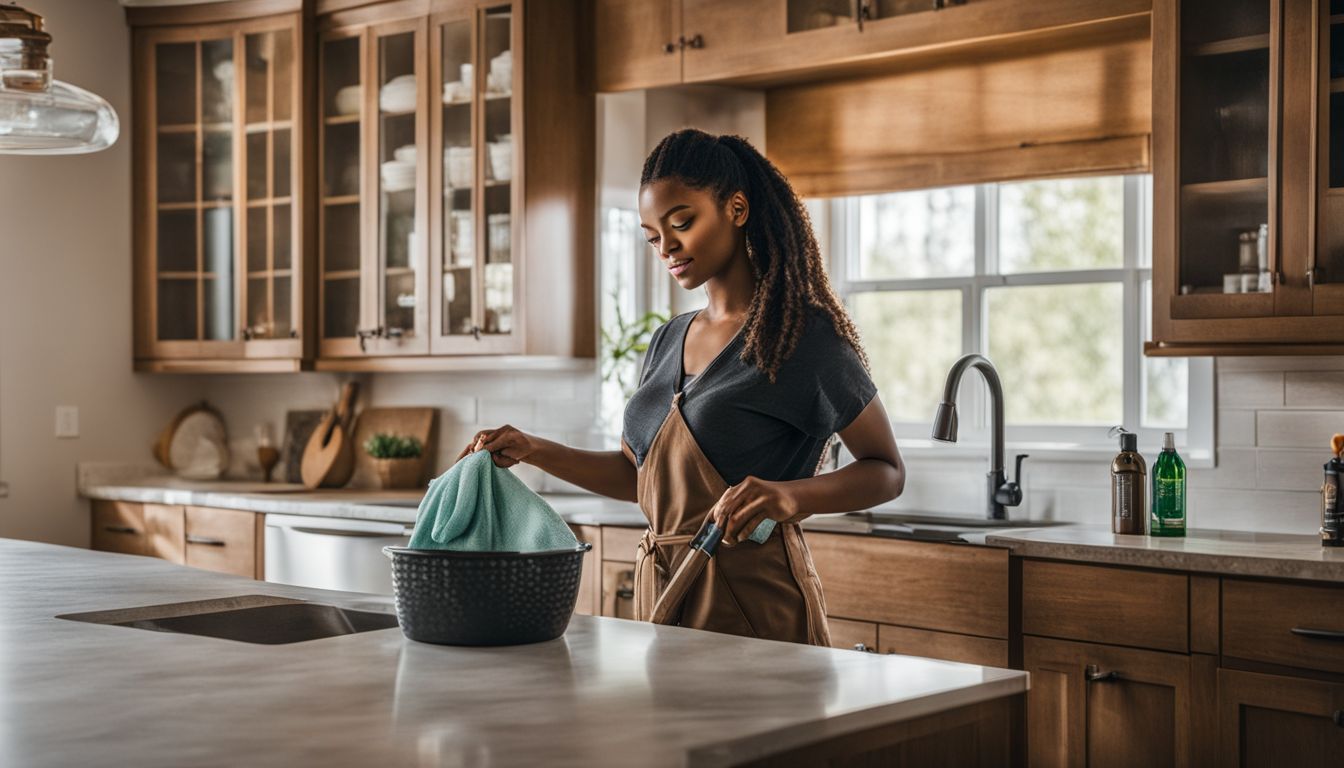
In addition to the recommended kitchen cabinet degreasers mentioned earlier, there are a few other options you may want to consider. One of them is Weiman Cabinet and Wood Cleaner, which is designed specifically for removing grease and grime from wooden cabinets.
Another option is the Rejuvenate Cabinet and Furniture Restorer, which not only cleans but also helps restore the shine and luster of your cabinets.
If you prefer natural alternatives, white vinegar mixed with water can be an effective degreaser for cabinets with thicker or stickier residue. Simply mix equal parts vinegar and water in a spray bottle, then spray it onto your cabinets and wipe away the grease.
Baking soda mixed with water into a paste can also be used to remove stubborn stains on cabinets.
Lastly, if you’re dealing with heavy deposits of grease on your kitchen cabinets, you might want to try using a commercial-grade degreaser like Simple Green Heavy-Duty Cleaner. This powerful cleaner is specially formulated to cut through tough grease buildup without damaging your cabinets.
When choosing a degreaser for your kitchen cabinets, keep in mind the type of material they are made of as well as any specific cleaning instructions provided by the manufacturer. Always test any new product or homemade mixture on a small inconspicuous area before applying it to the entire cabinet surface.
It’s important to regularly clean and maintain your kitchen cabinets to ensure they stay looking their best. By using these various degreasers, you can easily remove grease and stickiness from your cabinet surfaces so that they remain clean and beautiful for years to come!
Conclusion

In conclusion, finding the best degreaser for your kitchen cabinets is crucial for a clean and well-maintained kitchen. By properly degreasing your cabinets before painting and using the right tools and materials, you can effectively remove grease buildup and keep your cabinets looking their best.
With our recommended top picks and tips on choosing the right degreaser, you’ll have no trouble finding the perfect solution for your needs. Say goodbye to stubborn grease and hello to sparkling clean cabinets!
FAQs
1. What is a degreaser for kitchen cabinets?
A degreaser for kitchen cabinets is a cleaning product specifically designed to remove grease, grime, and stuck-on food residue from cabinet surfaces.
2. How do I choose the best degreaser for my kitchen cabinets?
When choosing a degreaser for your kitchen cabinets, look for one that is safe for the cabinet material (wood, laminate, etc.), easy to use, and effective at removing grease and stains.
3. Can I make my own DIY degreaser for kitchen cabinets?
Yes, you can make your own DIY degreaser using simple ingredients like vinegar or baking soda mixed with water. However, it’s important to test it on a small hidden area of your cabinets first to ensure it doesn’t cause damage.
4. How often should I use a degreaser on my kitchen cabinets?
The frequency of using a degreaser on your kitchen cabinets depends on how much cooking and grease buildup occurs in your kitchen. Generally, once every few months or as needed is sufficient.
5. Are there any safety precautions I should take when using a degreaser for my kitchen cabinets?
Yes, when using a chemical-based degreaser, make sure to wear gloves and work in a well-ventilated area. Follow the instructions provided by the manufacturer and avoid contact with eyes or skin.



